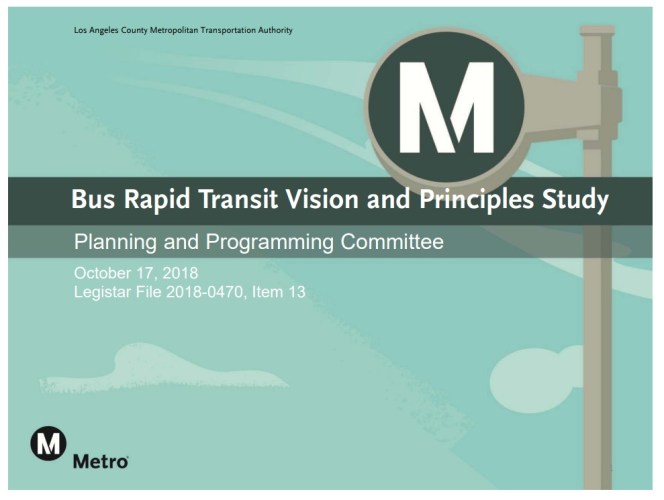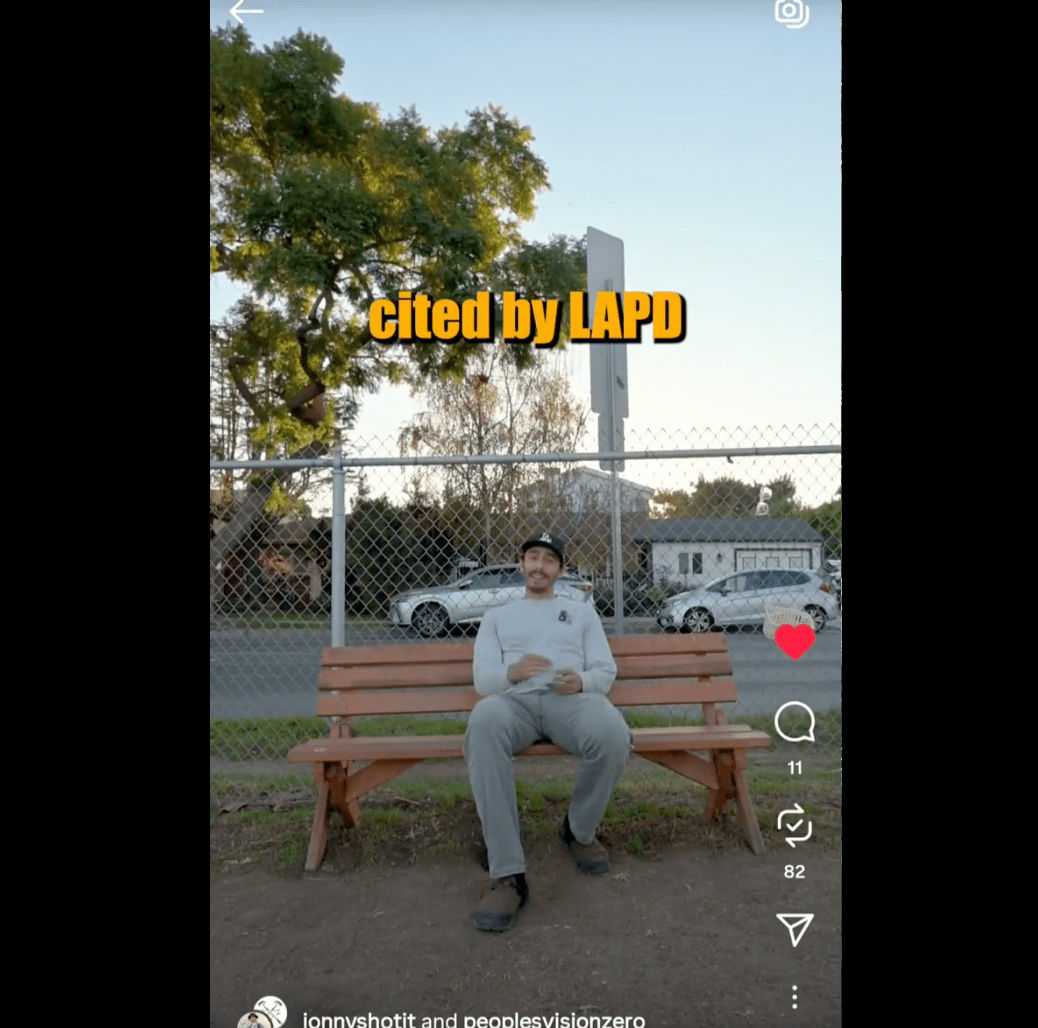Last week the Metro board approved the contract for a new Bus Rapid Transit study. Metro will spend $1.2 million on a 28-month "Bus Rapid Transit Vision and Principles Study" with another $611,000 for an option to add on a candidate corridors study.
If that sounds a bit déjà vu to readers, it might be because Metro has already done BRT studies - most recently Metro completed its Los Angeles County Bus Rapid Transit and Street Design Improvement Study back in 2013.
The irony wasn't lost on Metro boardmember and County Supervisor Hilda Solis, who commented last week that Metro should be integrating existing studies and filling in gaps like Valley Boulevard.
Valley Boulevard was one of the 14 priority BRT corridors identified in that 2013 study:
- Artesia (Gateway Cities/South Bay)
- Atlantic (Gateway Cities)
- Broadway (Westside/Central)
- Burbank‐North Hollywood (San Fernando Valley)
- Hawthorne (South Bay)
- La Cienega‐Vernon (Westside/Central)
- Pico (Westside/Central)
- North Hollywood‐Pasadena (San Fernando/San Gabriel Valleys)
- Roscoe (San Fernando Valley)
- Santa Monica (Westside/Central)
- Valley (San Gabriel Valley)
- Vermont (Westside/Central)
- Western (Westside/Central)
- Whittier (Gateway Cities)
Metro does have three of these projects in the middle of planning processes: North Hollywood‐Pasadena, Roscoe, and Vermont.
One things that really irks this Streetsblog editor is how bus improvements get "studies" while highways, express lanes, rail all get "plans" and "projects."
Metro's has been promoting its NextGen Bus Study - but it's just a "study" with no commitment to actually implementing bus improvements - and no budget for improvements. Metro's 10-year budget projections show no increases in bus funding. NextGen itself resembles a re-hash of Metro's Blue Ribbon Committee frequent bus service network re-organization, which was approved in 2015, slated for implementation in mid-2016, then quietly shelved. Will Metro's NextGen effort actually go anywhere?
How have Metro's BRT projects fared on the ground?
The Orange Line BRT exceeds ridership projections and is being upgraded to rail, though its speed has suffered from Metro and L.A. City's inability to give buses priority at intersections.
The mostly freeway-running Silver Line BRT is pretty fast, but its mid-freeway stations are miserably loud and polluted. L.A. City has failed to give Silver Line buses priority on downtown streets.
The project most analogous to the 14 planned... er... studied corridors is the $31.5 million 7-mile Wilshire Boulevard BRT project, featuring peak-hour bus-only lanes. Since the first segment opened in 2013, these bus lanes have been plagued by cars, cars, cars, and cars. Enforcement is pathetic, as documented in 2015 and even last week.
Metro's recently approved Strategic Plan calls for enforcement of exclusive lanes. What's the hold-up?
That Metro's multi-million-dollar BRT projects languish while multi-billion-dollar highway and rail projects get built is not entirely Metro's fault. Metro has to work with other jurisdictions. In 2015, the city of L.A. approved a Mobility Plan that calls for an extensive network of BRT corridors, but L.A. has trouble prioritizing transit... so L.A. hasn't added new bus-only lanes.
Metro NextGen staff report that they are working with the L.A. City Department of Transportation (LADOT) to identify bus speed improvement upgrades. Hopefully these negotiations will bear fruit.
If Boston can do pop-up bus-only lanes (now approved to become permanent), then Metro can work with L.A. County municipalities to get BRT improvements on the ground. Bus riders are counting on Metro to go beyond studies and really implement projects that speed up bus service. Perhaps Metro could work with cities to do short-term pilots (maybe six months) to test out BRT concepts on the ground.
Maybe the new BRT study will help?






